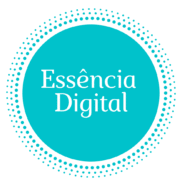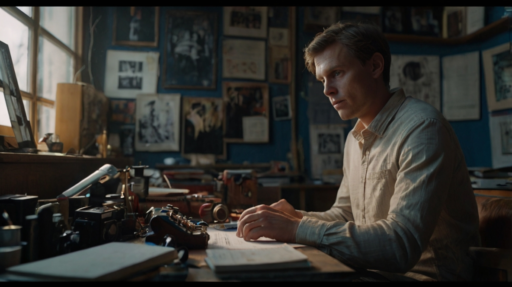Your portfolio’s content showcases your talent, but its design showcases your professionalism. Before a potential client reads a single word of your case study or examines the details of your work, they are already forming an opinion based on the layout, typography, and overall user experience of your site.
A great portfolio design doesn’t just display your work—it elevates it. It creates a seamless, intuitive, and impressive experience that communicates your attention to detail and your respect for the viewer’s time. It is the silent, powerful advocate for your creative skills.
This guide breaks down the essential design principles that will help you create a portfolio that is not only beautiful but also functions as a powerful client-acquisition tool.
The Art of Guiding the Eye: Mastering Visual Hierarchy
Visual hierarchy is the silent narrator of your portfolio. It’s the strategic arrangement of elements to tell the visitor’s eye exactly what is most important and where to look next. A portfolio with a weak hierarchy feels chaotic and overwhelming, forcing the user to work too hard. A strong hierarchy, on the other hand, feels effortless and intuitive.
Master hierarchy with these core principles:
- Size and Scale: The largest elements on the page will always draw the most attention. Your most impactful project image or your main headline should be significantly larger than other elements.
- Color and Contrast: Use bright, bold, or high-contrast colors strategically to highlight key information, such as call-to-action buttons or important headings.
- Whitespace (Negative Space): This is one of the most powerful design tools. Whitespace is not “empty” space; it’s “breathing room” for your content. It reduces cognitive load, improves readability, and gives your work a sophisticated, uncluttered feel.
- Proximity: Group related items together. For example, a project’s title, a short description, and its thumbnail image should be visually clustered. This creates an immediate, intuitive connection for the viewer.
Curating the Viewing Experience: Purposeful Project Presentation
Your projects are the stars of the show, and their presentation matters immensely. The goal is to make your work look its absolute best and to present it in a context that a client can understand.
- Use High-Quality Assets: This is non-negotiable. Use high-resolution images, crisp graphics, and clean video embeds. Grainy or poorly lit images will instantly devalue your work.
- Show Work in Context with Mockups: Help clients visualize the final product. If you designed a mobile app, display it on a high-quality phone mockup. If you wrote website copy, show it on a mockup of a webpage. This makes your work feel real and tangible.
- Tailor the Layout to the Medium:
- For UX/UI Design: Showcase your work with a mix of user flow diagrams, wireframes, and polished final screens presented in clean device mockups.
- For Photography: Use full-bleed images and dynamic grids that allow the viewer to immerse themselves in the visuals.
- For Writing: Don’t just link to a PDF. Create a visually appealing page for each sample, using large pull quotes, relevant imagery, and clean typography to create a premium reading experience.
Your Portfolio’s DNA: Expressing Your Brand Identity
Your portfolio’s design is an extension of your personal brand. It should feel authentically you. The colors, fonts, and overall mood should align with the style of your work and the type of clients you want to attract.
Ask yourself: Is my brand…
- Minimalist and sophisticated?
- Bold, vibrant, and energetic?
- Tech-forward and sleek?
- Artistic and organic?
Define a simple style guide for your portfolio—a primary and secondary font, a limited color palette (3-4 colors is often best), and a consistent style for your imagery. This cohesiveness is what makes a portfolio feel polished and professional.
The “Mobile-First” Mandate: Prioritizing Responsive Design
In 2025, it’s a guarantee that a significant portion of your visitors—including busy creative directors and potential clients—will view your portfolio on their phone. If your site is difficult to use on a mobile device, you have likely lost that lead forever.
A responsive design is no longer optional; it is a requirement.
- Ensure your text is readable without pinching and zooming.
- Check that your images scale correctly and don’t slow down the site’s loading time.
- Test all buttons and links to make sure they are easily tappable.
Modern portfolio platforms like Webflow, Squarespace, and responsive WordPress themes make this easier than ever, but you should always test your site on your own phone before sharing it with the world.
The Effortless Journey: Intuitive Navigation
Your site’s navigation is like the signage in a well-designed building—it should be so clear that no one ever feels lost. Visitors should never have to wonder where to click next.
- Keep Your Menu Simple: Stick to essential, universally understood labels like “Work,” “About,” and “Contact.” Avoid clever but confusing terms.
- Provide a Clear Call to Action (CTA): What is the one action you want visitors to take? Make it obvious. A “Contact Me” or “Let’s Work Together” button should be prominently placed, often in the header or footer of every page.
- Use Consistent Templates: The layout for each of your project pages should be consistent. This predictability allows the user to focus on your work, not on learning how to navigate a new page layout each time they click.
Conclusion: Great Design Works for You
Portfolio design is where art meets science. It’s a strategic blend of aesthetics, user experience, and brand storytelling. A well-designed portfolio does more than just look good; it works. It works to capture attention, build trust, guide the user, and ultimately, convince your ideal client that you are the right choice.
When your portfolio’s design is as thoughtful and professional as the work it contains, you create a powerful and persuasive experience that turns visitors into clients.
“To provide a concrete example (minimalism) of the principle of balancing aesthetics with usability”.

